“The future of indigo can be a redemption story, one that brings hope to a people, to a culture, to an archipelago of islands.”
We came together on Sapelo Island through a vision of how heritage agriculture could help try to save a culture; we came together because Cornelia Walker Bailey had this vision, and this vision required us to work together. We started this work from the conviction that geography, culture, and history are always dyed, stitched, and sewn into our textiles—old and new—and tell us stories that many times we miss. We may miss them because the long history of alienation blocks us or, sometimes, because we are just too anxious to remember them. Other times, we just cannot bring ourselves to recognize what our textiles tell us about ourselves or who we want to be—because of the memories they invoke, the neural pathways they open, or the pain and violence they conjure, especially for many Black people in the United States. Pondering ancestral connections, many people, Black and white, situate crops, labor, technique, technologies, adornment, and fashion with enslavement and oppression. Indigo, a plant with multiple medicinal and cultural purposes, straddles historical trauma on Sapelo given its connection to enslavement and freedom as we grow it now in the spirt of preserving Gullah Geechee culture.
Scholar Fowota Mortoo starts her essay “The Memory Keepers” with a challenge, asking, “Why does memory matter?” She answers, “The dreams we have for ourselves, our children, our grandchildren, are shaped by what we inherit. In the present, we craft our future towards or away from, but always with the blueprint of our past, with what, and who, we are taught matters.” We wonder, how does the future of our creative expression, our cultivation of plants, our art, our textiles, and all the experience and emotion we carry that give birth to our creativity, figure into this explanation of our past forming our future?1
Just as memory keepers can invoke deeply traumatic associations, there are also visionary memory makers who are forward-looking, who allow us to prefigure how we can know future worlds; these people teach us how we can make, shape, and produce the worlds to come. Ms. Cornelia Walker Bailey, Maurice’s mother, was one of these visionaries. Her deep connections to the crops her ancestors grew on Sapelo Island allowed her to see beyond the pain caused through white supremacy on Sapelo Island, beyond enslavement. A griot in the West African ways, she never ignored the history or memory of this pain, but imagined the possibilities of how indigo can reflect, mirror, and reveal all the shades of the sky and all the shades of the sea, and how it can create new horizons and new memories for future generations. Ms. Cornelia heard about the spiritual, medicinal, and magical elements of indigo growing up on Sapelo Island, where it used to be grown, and knew the power it once held. Today, she hopes to combat the forces of cultural genocide on her community of Hogg Hummock, by tying the future of Saltwater Geechee culture to the future of indigo and other heritage crops.2
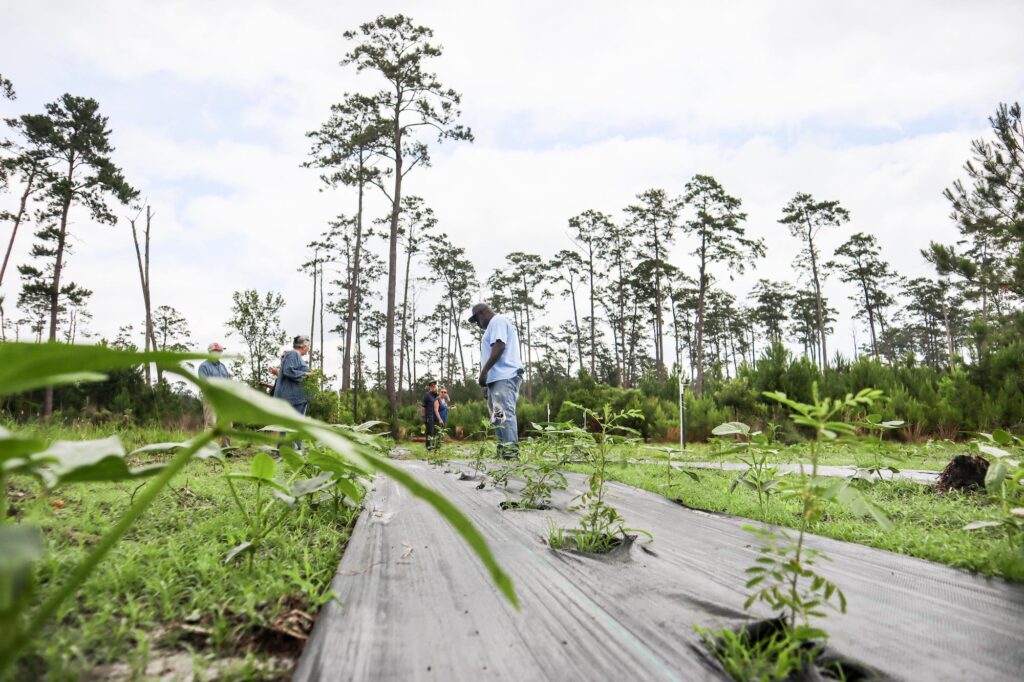
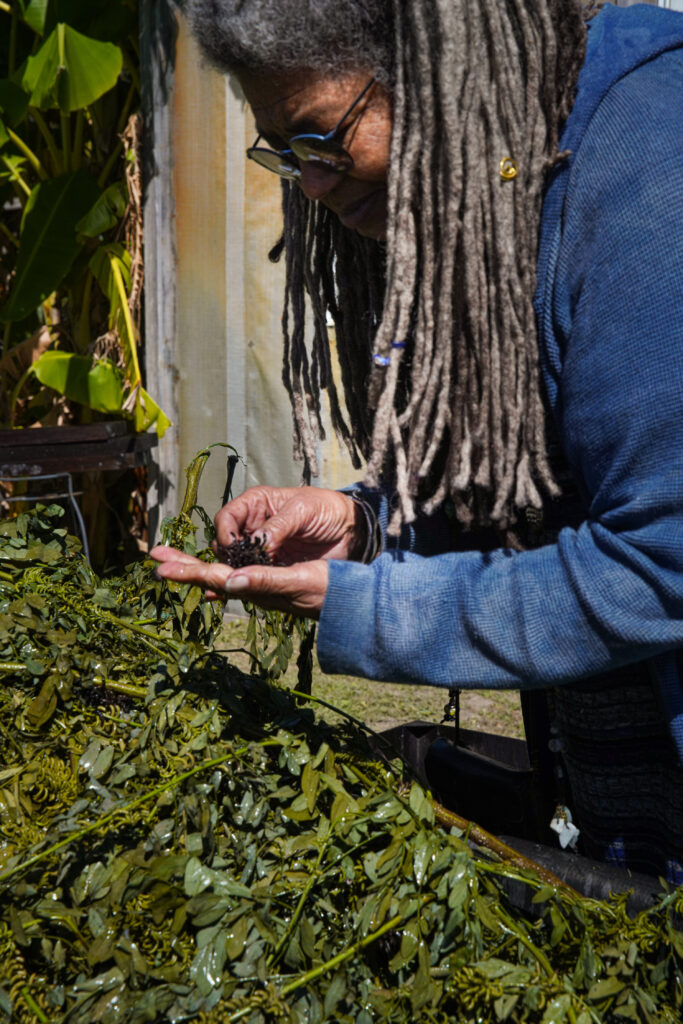
In her book on indigo, writer and curator Catherine E. McKinley discusses its power: “But as much as it was used for mysticism and healing and for beauty, West African women in particular wielded great social, political, and cosmological power as renowned master dyers and traders, and their indigo wealth became cornerstones of ancient empires and twentieth-century anticolonial movements, shaping the course of history and world economics.” Too often, it is the colonial history of indigo that informs people’s understandings about the magical little green leaves that, through the alchemy of time, heat, and chemical transformation, yield a color that has changed the world many times over. That colonial history, one based on enslavement and the deprivation of many souls, can never be forgotten, but we can make new memories that allow us to see indigo blue with all the beauty it represents. According to Ms. Cornelia’s vision, we need not see only the Black-blue arms of those who were forced to produce the color across the Lowcountry plantations of South Carolina and Georgia. The future of indigo can be a redemption story, one that brings hope to a people, to a culture, to an archipelago of islands.3
There is an effort afoot across the Lowcountry to bring indigo back through collective and cooperative efforts. We started to learn about growing and processing indigo because Ms. Cornelia envisioned an economic development and cultural preservation strategy on Sapelo Island. Working with Donna Hardy, an indigo expert who has learned and taught many people across the Southeast about the power of indigo, has opened up other doors and opportunities to imagine the future of indigo across the Gullah Geechee Cultural Corridor. Recently, the International Center for Indigo Culture (ICIC), which Hardy helped create, announced a two-year grant to fund a “train the trainer” agricultural model for teaching farmers to grow and process indigo in the Lowcountry. Growing indigo on the Save Our Legacy Ourself Farm on Sapelo Island, we were included as a southern anchor in this effort, along with growers like Sara Reynolds Green, who is cultivating indigo on ancestral lands on the Marshview Community Organic Farm in St. Helena, South Carolina, as the northern anchor. In addition to bringing growers together, the ICIC effort is harnessing the skills not only of dyeing masters like Donna Hardy but also those of Arianne King Comer, who studied batik under celebrated Nigerian artist Nike Olyani Davis and has become internationally recognized as central to indigo’s reclamation by Black growers and artists.
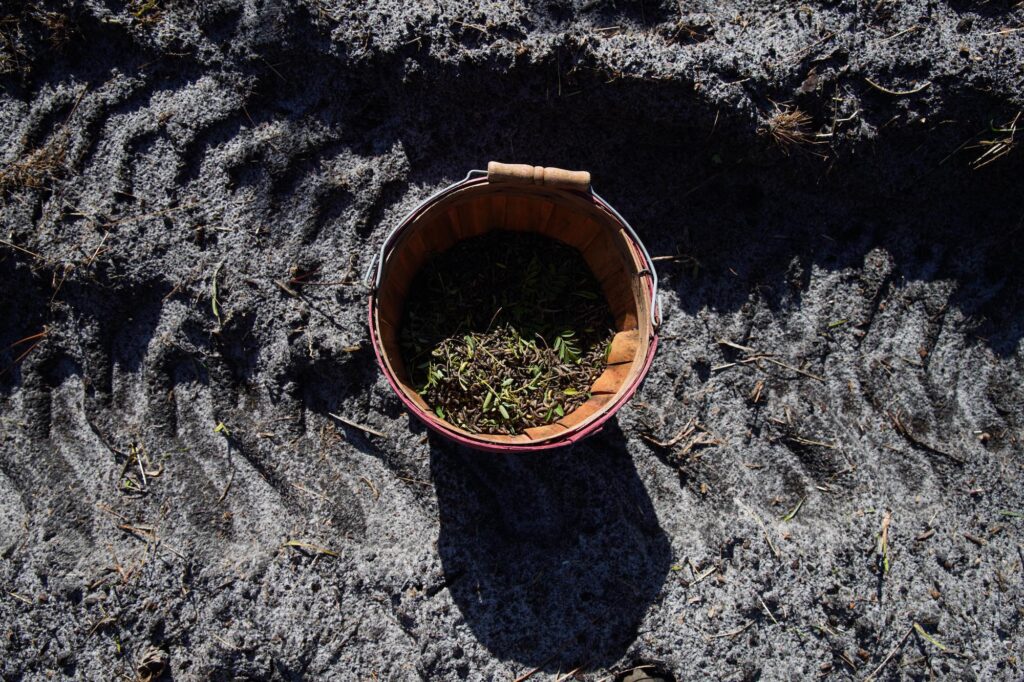
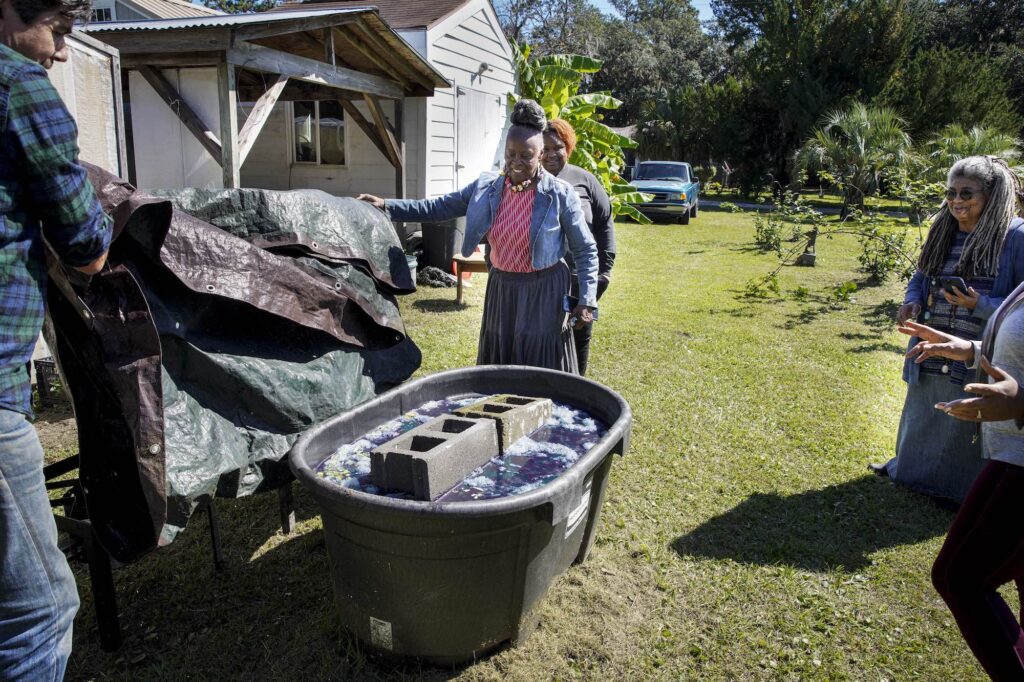
We are all working together with the ICIC to capture, share, and help add capacity to the science and art of indigo; to help redeem the crop across the Gullah Geechee Cultural Corridor; and to help make new memories of it. The ICICis committed to doing this largely through continued education and conducting research into the best and most sustainable ways to grow indigo plants and process indigo dye, just as we are committed to doing these things on Sapelo Island as Ms. Cornelia asked us to before she passed away in 2017.
In The 1619 Project, Nikole Hannah-Jones and Renée Watson remind us how enslaved people and their descendants played a foundational role in “shaping our institutions, our intellectual traditions, our music, art, and literature, our very democracy.” Given this and given how our textiles and the colors they bring to the world are central to this logic, we wonder how we proceed with the task of redeeming indigo. There is a spirit here, a spiritual calling, in this work we are doing, a sense of futurity that we are working to capture through bringing indigo back to Sapelo Island and collaborating across the Gullah Geechee Cultural Corridor. We are driven by the forces that would end Saltwater Geechee Culture on Sapelo Island forever to bring indigo and the twelve tones of sky and sea back to the Lowcountry. We are driven to do this is in emancipatory ways that nourish creative souls and help provide redemptive paths forward for textiles of the future.4
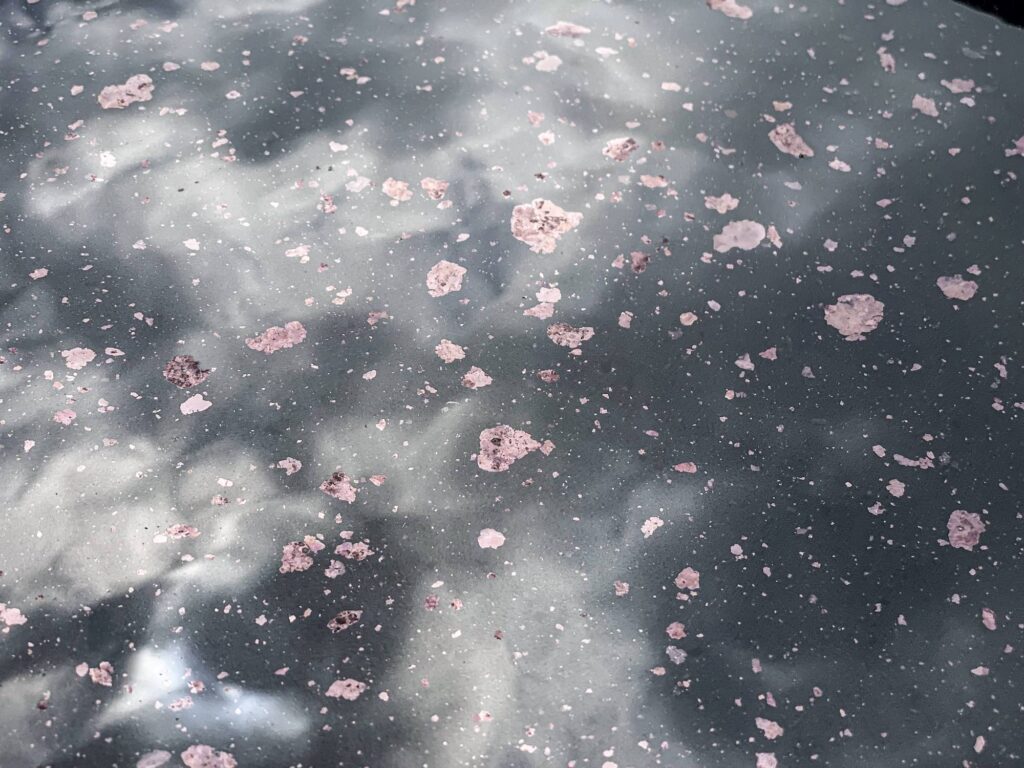
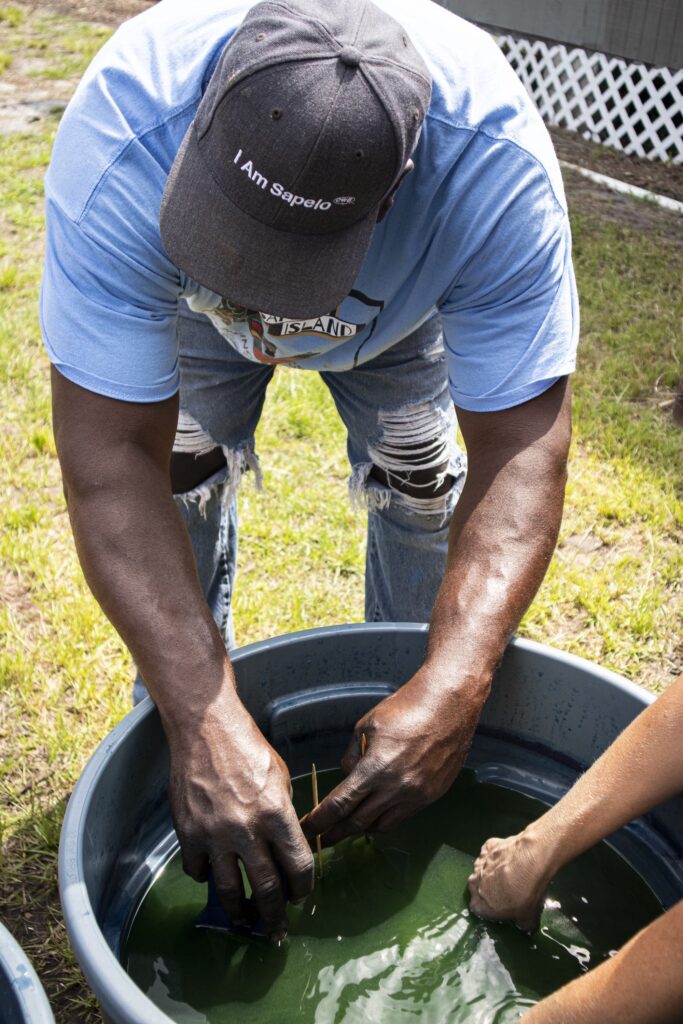
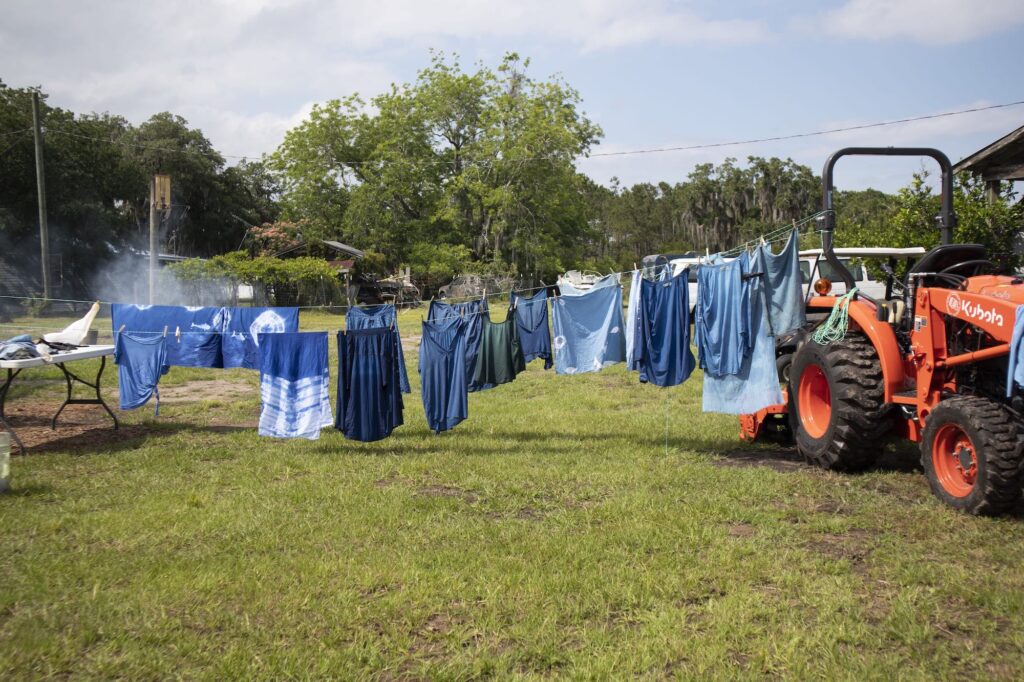
Maurice Bailey is a ninth-generation Sapelo Island resident; president and chief executive officer of Save Our Legacy Ourself, based on Sapelo Island; and codirector of University of Georgia’s Cornelia Walker Bailey Program on Land and Agriculture.
Nik Heynen is a distinguished research professor in the department of geography and visiting scholar at Spelman College, and is also codirector of University of Georgia’s Cornelia Walker Bailey Program on Land and Agriculture.
Rinne Allen is a documentary photographer based in Athens, Georgia, who works across the American South. Over the last two decades, she has worked out in the field documenting crops, food systems, farmers, chefs, and artists who all work with ingredients from the land.
Header image: Sara Reynolds Green and her indigo, Marshview Community Organic Farm, St. Helena Island, South Carolina, 2023.
NOTES:
- Fowota Mortoo, “The Memory Keepers,” accessed October 29, 2024, www.fowotamortoo.com/work/memory.
- Cornelia Walker Bailey and Christena Bledsoe, God, Dr. Buzzard, and the Bolito Man: A Saltwater Geechee Talks about Life on Sapelo Island, Georgia (Doubleday Books, 2000).
- Catherine E. McKinley, Indigo: In Search of the Color that Seduced the World (Bloomsbury Publishing, 2011), 2.
- Nikole Hannah-Jones and Renée Watson, The 1619 Project: Born on the Water (Penguin, 2021), xxxii.

